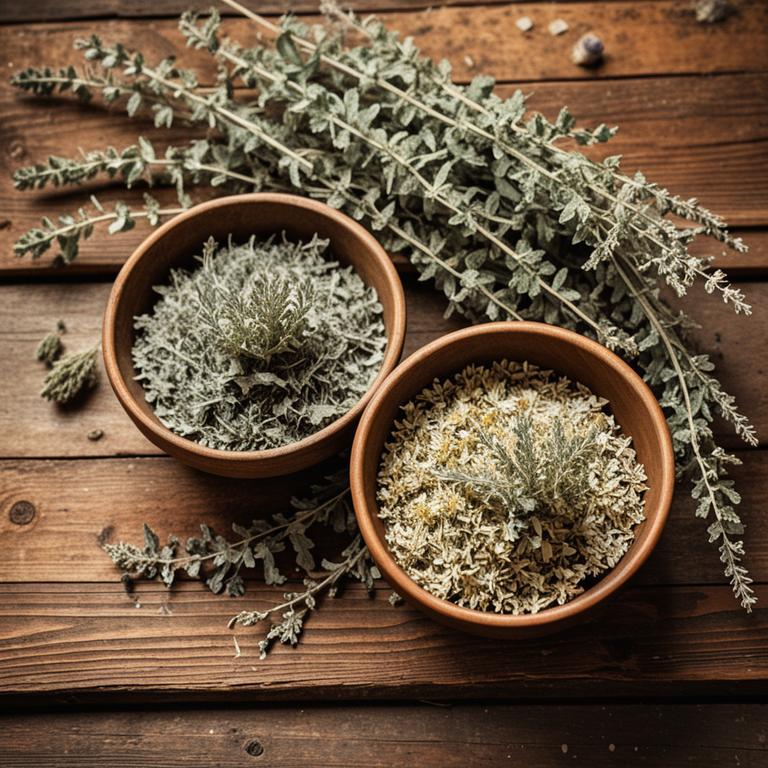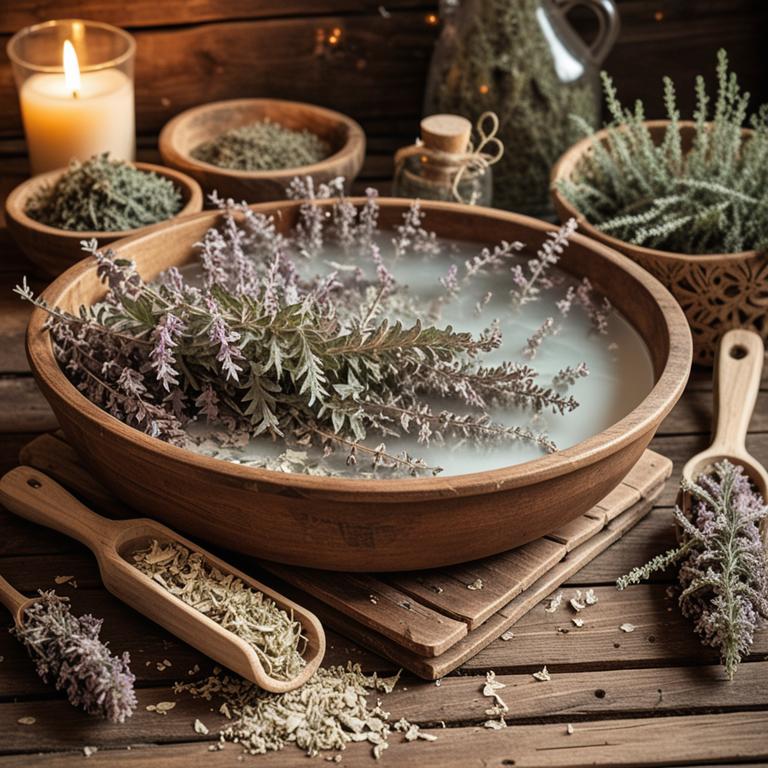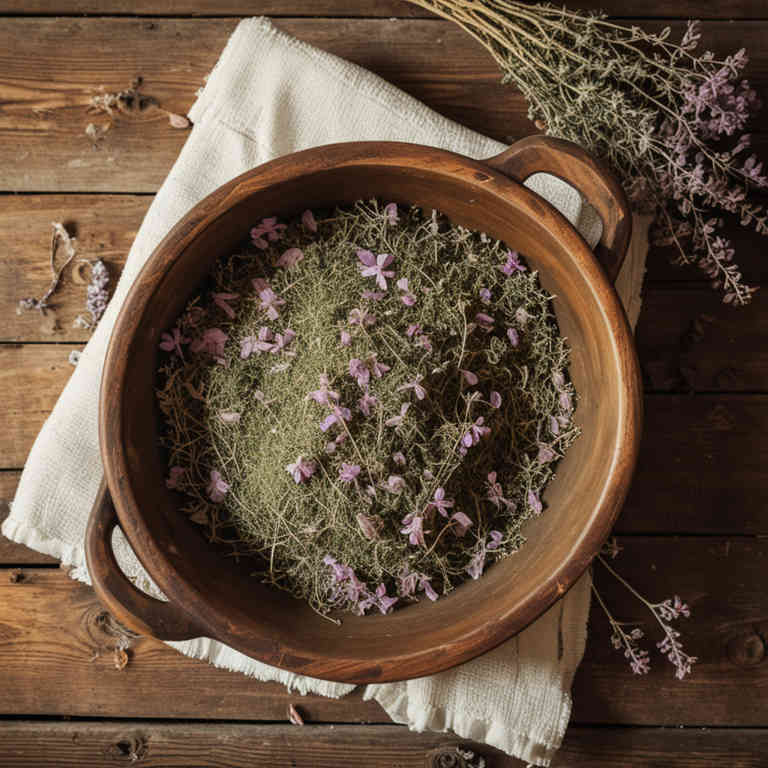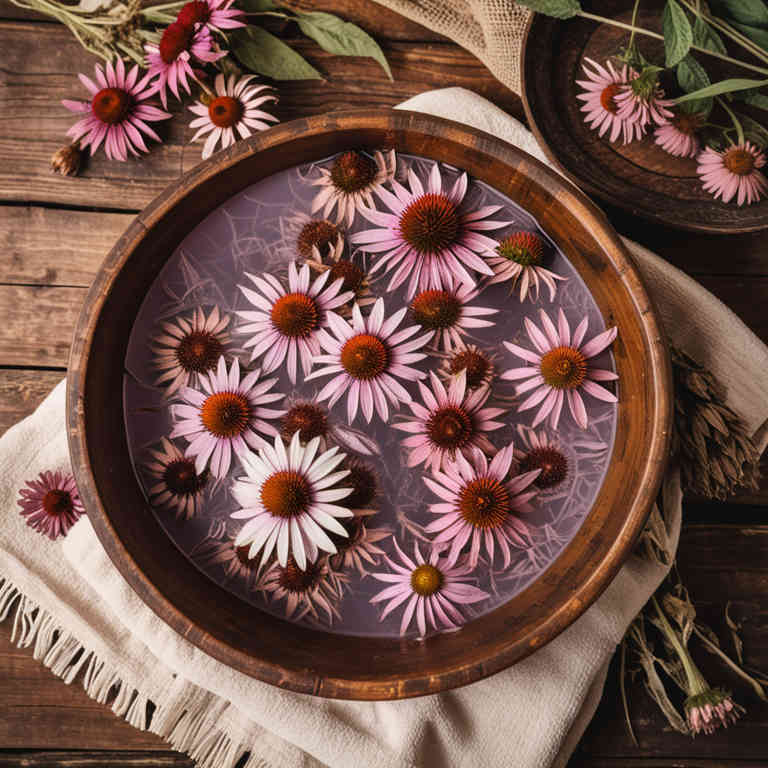10 Best Herbal Baths For Ringworm

Herbal baths can be an effective complementary treatment for ringworm by leveraging the antifungal and soothing properties of certain herbs.
Commonly used herbs such as garlic, tea tree oil, echinacea, and calendula are known for their natural antifungal and anti-inflammatory effects. To prepare an herbal bath, these ingredients can be infused into warm water, allowing the skin to absorb their beneficial compounds. Regular soaking in such baths may help reduce the fungal infection's spread and alleviate associated symptoms like itching and redness.
While herbal baths should not replace medical treatments, they can support overall recovery when used alongside prescribed antifungal therapies.
FREE Herb Drying Checklist
How to make sure every batch retains maximum flavor, color, and aroma without the risk of mold or over-drying. Eliminate guesswork and trial-and-error, making herb drying faster, easier, and more efficient every time.
Table of Contents
1. Urtica dioica

Urtica dioica, commonly known as stinging nettle, has been traditionally used in herbal baths to treat various skin conditions, including ringworm.
When steeped in hot water, the leaves of this plant release compounds that may have antifungal and anti-inflammatory properties. These properties are believed to help reduce the fungal infection and soothe the irritated skin associated with ringworm. To prepare the bath, fresh or dried nettle leaves are boiled and then allowed to steep for several hours before being used in a warm bath.
Regular use of urtica dioica baths may provide natural relief and support the healing process for those suffering from ringworm.
2. Hypericum perforatum

Hypericum perforatum, commonly known as St. John's Wort, has been traditionally used in herbal baths for its potential antifungal and anti-inflammatory properties.
When infused into bath water, the compound hypericin in St. John's Wort may help reduce the symptoms of ringworm by inhibiting fungal growth on the skin. To prepare the bath, a handful of dried Hypericum perforatum can be steeped in hot water for several hours, then strained and added to a warm bath. Regular use of this herbal bath may provide relief from the itching and redness associated with ringworm.
However, it is important to consult a healthcare provider before using St. John's Wort, as it can interact with certain medications.
3. Achillea millefolium

Achillea millefolium, commonly known as yarrow, has been traditionally used in herbal remedies for its antifungal and anti-inflammatory properties.
When prepared as a bath, yarrow can help soothe the skin and may reduce the symptoms of ringworm by creating an environment less conducive to fungal growth. To make a yarrow herbal bath, steep fresh or dried yarrow leaves in hot water for several hours, then use the infused water to bathe the affected area. Regular use of this bath can provide relief and support the healing process of ringworm infections.
However, it is advisable to consult a healthcare professional before using herbal treatments, especially for persistent or severe fungal infections.
4. Teucrium marum

Teucrium marum, also known as redstem tamarisk, has been traditionally used in herbal medicine for its antifungal and anti-inflammatory properties.
When used in herbal baths, it can help alleviate symptoms of ringworm by reducing skin irritation and combating the fungal infection. To prepare the bath, steep a handful of dried Teucrium marum in boiling water for about 15 minutes, then strain and use the infused water to soak the affected area. This natural remedy is particularly beneficial for those seeking a gentle, alternative treatment for fungal skin conditions.
However, it is advisable to consult a healthcare professional before using herbal baths, especially if the infection is severe or persistent.
5. Teucrium polium

Teucrium polium, also known as summer savory, has been traditionally used in herbal remedies for its antimicrobial and anti-inflammatory properties.
When used in herbal baths, it can help soothe the skin and reduce the symptoms of ringworm, a fungal infection. To prepare the bath, fresh or dried leaves of Teucrium polium are steeped in hot water to create a soothing infusion. This herbal solution is then added to warm bathwater, allowing the skin to absorb its beneficial compounds.
Regular use of Teucrium polium baths may support the healing process and provide relief from the itching and redness associated with ringworm.
6. Rosmarinus officinalis

Rosmarinus officinalis, commonly known as rosemary, has been traditionally used for its antifungal and antimicrobial properties, making it a valuable herb for treating ringworm.
When used in herbal baths, rosemary can help soothe the skin and reduce the infection's spread by creating an environment less favorable for fungal growth. To prepare a rosemary bath, one can steep fresh or dried rosemary leaves in hot water and then add the infusion to a warm bath. The aromatic compounds in rosemary may also provide a calming effect, aiding in the overall comfort of the individual.
While rosemary baths can be a natural complement to other treatments, they should not replace medical advice, and it is important to consult a healthcare provider for persistent or severe cases of ringworm.
7. Thymus vulgaris

Thymus vulgaris, commonly known as thyme, has been traditionally used in herbal baths for its antifungal and antimicrobial properties.
When infused into bath water, thyme essential oil or dried thyme leaves can help soothe the skin and reduce the symptoms of ringworm, a fungal infection. The active compound thymol in thyme is believed to inhibit the growth of fungi that cause ringworm. To prepare a thyme bath, add a few drops of thyme essential oil or a handful of dried thyme to warm water and soak for 15 to 20 minutes.
While thyme baths may offer some relief, they should not replace medical treatment, and it is advisable to consult a healthcare professional for persistent or severe cases.
8. Echinacea purpurea

Echinacea purpurea, commonly known as purple coneflower, has been traditionally used for its potential antimicrobial and anti-inflammatory properties.
When incorporated into herbal baths, echinacea may help support the body’s natural defenses against fungal infections like ringworm. To prepare an echinacea bath, steep dried echinacea flowers in hot water for several hours, then strain and use the infusion to fill a bathtub. This type of bath is often recommended as a complementary therapy to help alleviate symptoms and promote skin healing.
While echinacea baths are generally considered safe for most people, it is advisable to consult a healthcare professional before use, especially for those with known allergies or skin sensitivities.
9. Salvia officinalis

Salvia officinalis, commonly known as sage, has been traditionally used in herbal baths for its antimicrobial and soothing properties.
When used in a bath, sage can help reduce the fungal infection caused by ringworm due to its natural antifungal compounds, such as thujone and camphor. To prepare a sage bath, a handful of dried sage leaves can be steeped in hot water, then added to a tub of warm water for soaking. The steam from the bath may also help to open pores and enhance the absorption of its beneficial properties.
While sage baths can be a complementary treatment, they should not replace medical advice, and it is important to consult a healthcare provider for persistent or severe cases of ringworm.
10. Lavandula angustifolia

Lavandula angustifolia, commonly known as English lavender, has been traditionally used for its soothing and antifungal properties, making it a popular choice for herbal baths aimed at treating ringworm.
When infused into bathwater, lavender oil can help reduce the itching and redness associated with ringworm while promoting skin healing. The essential oils in lavender possess natural antifungal compounds that may inhibit the growth of the fungus responsible for ringworm. To use lavender in a bath, simply add a few drops of lavender essential oil to warm water and soak for 15 to 20 minutes.
While herbal baths can provide relief, they should be used in conjunction with other treatments recommended by a healthcare professional for optimal results.